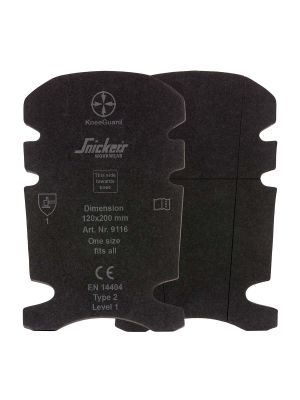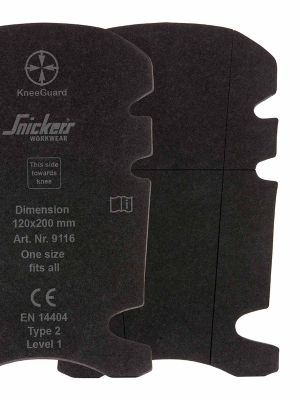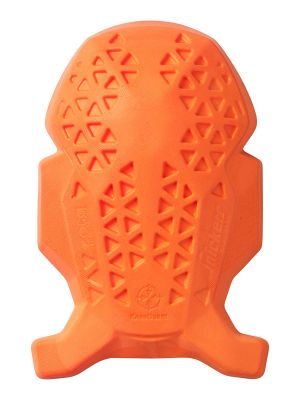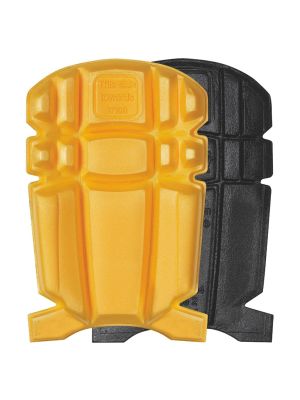Snickers knee protection











With Snickers workwear you protect your knees for after work
When it comes to knee protection, a number of factors are important. We explain how you can improve the fit of a knee protector, which knee protectors are suitable for your work and how different features of the knee protector affect the level of protection. We also give some tips about the maintenance of the knee pads for an optimal life.
The perfect fit for your own knees
A knee pad may be the best on the market, but without a good fit, it won't protect your knees well enough. What makes your knee pads fit perfectly?
One of the most important aspects of a good fit, which is often overlooked, is the size of your work trousers. If the legs are too long or too short, the knee pad pockets are not in the right place. When you put a knee protector in the knee pocket, it will be too high or too low to properly protect the knees. So make sure you wear pants in the right size.
Not only the size of the work trousers makes a difference, the cut of the trousers also plays a role. When kneeling in straight leg pants, the fabric shifts from the knee to the side. When you add a knee protector to this, it will also shift to the side. So look for work trousers with a Twisted Leg design. This type of trouser legs keeps the knee pad pocket in the right place when kneeling and thus provides better protection.
A good knee protector stays in place, whether you kneel or get up again. Knee pads that shift in the knee pocket can cause immediate and long-term injuries if your knee "misses" the point with the most knee protection. The easiest way to increase the level of protection is to place the knee protector in the correct position. The KneeGuard system helps you with this, because you can fix the knee protector in different positions.
The design of the knee protector has a great influence on the fit. He should not only protect the kneecap, but also the area around it. A well-designed knee protector fits around the knee and prevents your knee from slipping off the protector.
Checklist for finding a perfect fit:
- If you find that you always have to pull a leg or knee pad pocket to get the knee protector in the right place, this is an indication that the size of your pants is not quite right or the knee protector is in the wrong position.
- When you fit a new pair of trousers, try not only standing up, but also kneel as you would at work to see if the knee pad pockets are in the right place.
- Are the knee pads of your choice suitable for the work trousers you wear? Not all knee pads can be used in all work trousers and mixing and matching different brands can affect the level of protection.
Which knee pads do you need for the work you do?
Tips for choosing:
- Have you ever had knee pads that went "flat" after a few working days? Then that knee protector is not suitable for your work. If you choose a knee protector designed for the amount and time of kneeling you will also see a difference in the life of the knee protector.
- Not all work within the same field is the same, so knee pads are not the same for everyone. For example, an electrician who pulls many wires along the floor kneels much more than an electrician who specializes in ceiling lighting. They would both need a different kind of knee protector; one heavy-duty and the other light and flexible. So instead of looking at the field you work in, you better be guided by the work you really do one day when choosing good knee protection.
- Do you have the feeling that you are exactly between shore and ship (for example between barely kneeling and occasionally kneeling) and you do not know exactly which knee protection to choose? Then go for the protector that offers just a little more protection, your knees will thank you!
Material and Design
With knee pads it is important that they are made for the work you do and have a perfect fit, but the design and material of the knee protector can also affect the level of protection and comfort. Here you will find a number of features that you can pay attention to when choosing the perfect knee protector.
Shape: A well-shaped knee protector not only protects the center of the knee, but fits around the knee to protect the sides. Look for knee pads with a slightly curved design and sides that are raised.
Confirmation: How can you keep the knee protector in place? For optimal protection, choose a knee protector that has a way to secure it in the knee pad pocket so that it doesn't slide back and forth while you work.
Flexibility: A flexible knee protector works more comfortably because it adapts to the position you are in. Keep in mind that the knee protector does have the level of protection you need.
Ventilation: Working on your knees can sometimes be very hot. Ventilation channels in the knee piece can have a major influence on your working comfort.
Shock absorption: Different materials react differently to impact. Innovative materials such as D3O have been developed to be flexible when walking and stiffen when shocked. In this way, the material absorbs most of the shock instead of your knee.
Durability: Some materials are more durable than others. A lightweight foam (such as PE) is probably less durable than a stiffer material such as Polyolefin.
Maintenance of your knee pads
Once you have found the ideal set of knee pads, you can do a number of things to improve the lifespan. Maintaining your knee pads not only ensures that they last longer, but also ensures that the protection stays on the arrow. Here our tips:
- Do not wash your work trousers with the knee pads in the pockets. We know it's tempting, but your knee pads will last a lot longer if you take them out of the pockets before every wash.
- Most knee pads can be washed, just make sure you don't use harsh detergents or very hot water. Hand washing is the way to go
- Replace the knee pads regularly. Knee pads with tears or cracks need to be replaced just like knee pads that no longer spring back to their original shape.
Protect your Knees
Your knees have to endure a lot when you work hard, often even more than professional athletes. It is therefore important to protect them as well as possible so that you can save your knees for after work.
With this article we would like to help you make the best choice based on your work and wishes. Do you have any questions or need help with your choice? Please send us a message to our customer service for more information.
